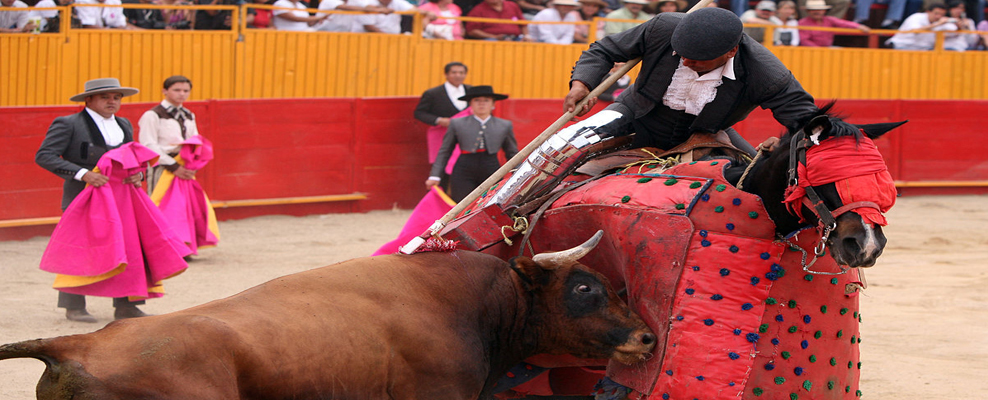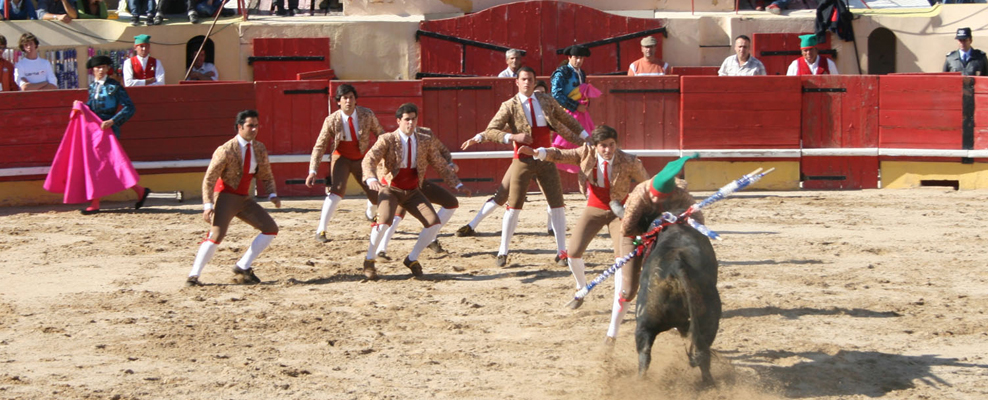The idea of this piece came when Jallikattu was hot news, a while ago. There were endless images of the traditional Tamil Nadu sport and there was much talk of ‘Tamil Pride’ linked with Jallikattu. But, I am afraid I have never seen Jallikattu, know nothing more about it than what appeared in the media and am not at all qualified to comment on ‘Tamil Pride’. But the Jallikattu stories did ring a bell and I was instantly reminded of the Forcados − bullfighters (bull-grabbers?) and their Portuguese Pride.
It was around Easter and I was in Lisbon. Rodrigo, my friendly hotel bartender, while serving me a glass of my favorite Cockburn’s Fine Ruby Port, suggested that I should go see a bullfight. He informed me that normally, the bullfights in Lisbon were on Thursdays but sometimes on Sundays too. Since the next day was a Sunday he insisted that I go and enjoy a unique spectacle. I said, “But I have seen bullfights in Spain and am quite familiar with the bullrings in Madrid, Barcelona, Seville, Majorca and some other places. One of my most cherished possessions is a poster featuring the great El Cordobes……” “But the Portuguese bullfights, ‘touradas’ are quite different from the Spanish ‘corrida de torros’,” Rodrigo interrupted. He started to explain the differences between the Portuguese and Spanish bullfights, but then stopped and said, “You must see for yourself.” Since he also offered to get me a ticket and explained in detail the easiest way of reaching the bullring – by metro to Campo Pequino – I agreed.
The next day, I picked up my tickets at the hotel reception and my way to Campo Pequino. But before we share the experience of my first Portuguese bullfight, a little about the history of bullfighting in Portugal.

The roots of bullfighting in Portugal go back to the ancient times when the Celts fought bulls in pagan festivals. Unlike in Spain, in the Portuguese bullfight is fought from horseback. The horses are of the renowned Lusitano breed, specially trained for fights and perhaps the oldest saddle horses in the world. The rider – Cavaleiro − aims to make the bull charge at him and to deftly stab small javelins in the bull’s back. The bull and the horse must charge at each other with the horse veering off to avoid impact. It is all a great display of equestrian excellence and shows the mastery of the rider and his horse over the bull. Traditionally, the riders were members of the nobility.
After an accident in the 18th century when a young nobleman – Count of Arcos – and his horse were killed by the bull, the killing of the bull in the ring was banned. Also it was decreed that the bull’s horns are padded or severed so that they do not present sharp points.
Now, on to our ‘No-death in the Afternoon’ on that April Sunday in Lisbon.
The Cavaleiro made his grand entry dressed in traditional 18th century finery – silk jacket embroidered with gold and embellished with lace, tan riding pants and black boots – a grand sight atop his proud Lusitano horse. There followed the excitement of the battle between the Cavaleiro, his horse and the bull. The courage and excellence of horsemanship and the Cavaleiro’s ‘victory’ were greatly appreciated and applauded.
I thought that this was the end of the fight and got up to stretch my legs but was pulled down in my seat by my smiling neighbor. He was making signs trying to tell me that there was more to come.

Then, there was a single figure walking to the middle of the arena. He stood there and started yelling at the bull – “O Touro. O touro lindo. (Hey bull! Hey beautiful bull!).” The crowd was sitting silently, in anticipation. Later, I learned that the Portuguese bullfight is in two parts. There is the horseback part with the Cavaleiro and then there is the ‘pega de touros’ (bull-catch or bull grab). The single figure yelling at the bull was the leader of with an 8-man gang to support him. They were the Forcados (Bull Grabbers).
They were unarmed and had no protection of any kind. Clad in tight pants with long white stockings, a red cummerbund and rather fancy jackets and a long green knit hat. But only the leader was wearing the hat, others had their hats slung over their shoulders. They formed a line in front of the bull. The lead-man, Forcado da Cara – was ‘playing’ with the bull, yelling and taking the odd mincing step forward towards the bull to make it charge.
After much taunting and posturing by the Forcado da Cara, the bull charged. It was all very well-timed and well-practiced. The leader caught hold of the bull’s head. The others instantly swarmed all over trying to wrestle the bull down to the ground. One forcado was holding on to the bull’s tail as if to create imbalance. In a matter of minutes, the forcados had wrestled the bull to the ground. The fight was over. Wounded and exhausted, the bull lay on the ground. It was not killed.
I had seen and done many mad things in my life. But I had never seen anything like this before. I mean just ‘ordinary’ men first grabbing the head of a 700kg charging bull and wrestling it down with just bare hands. Sheer madness! I was sure that the phrase “suicide squad” must have originated with these people.
Later I found that these young men were just ordinary folks. The money paid to them was just a pittance. They were doing it out of sheer pride. Portuguese Pride!
